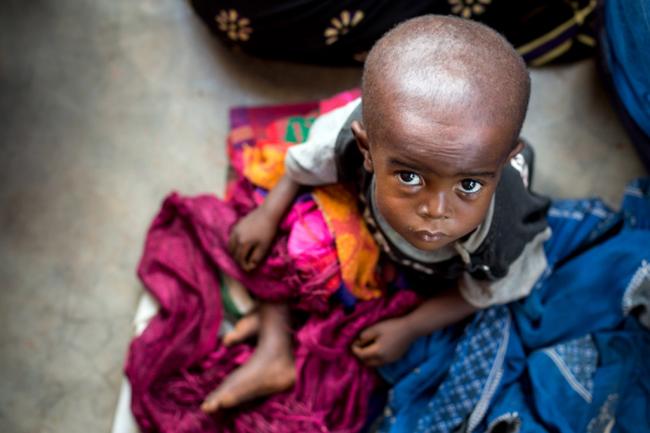
India has largest number of malnourished children in the world; 50% children in India undernourished: study
New Delhi, Nov 3 (IBNS): Over the decade, there has been an overall reduction in the infant mortality rates and under-five mortality rate in India, yet the country is housing about 50% of undernourished children of the world, reveals the joint study undertaken by ASSOCHAM–EY.
The study on ‘Bridging the gap: Tapping the agriculture potential for optimum nutrition’ jointly by ASSOCHAM and EY, has revealed that towards the end of 2015, 40% of the Indian children were undernourished.
About 37% of our under-five children are underweight, 39% are stunted, 21% are wasted and 8% are severely acutely malnourished, adds the joint study.
While the percentage of stunted children under five reduced from 48% in 2005-06 to 39% cent in 2015-16, the percentage of children who are wasted increased slightly from 19.8% to 21%.
The prevalence of underweight children was higher (38%) in rural areas compared to urban cities (29%). Only about 10% children under the age 6-23 months were reported to receive an adequate diet. This inequality in access is accentuated by the stark statelevel disparity in nutritional status.
For children 1-5 years of age, the prevalence of underweight children ranged from 42% in the Jharkhand, followed by Bihar, MP and UP with 37%, 36% and 34.1% respectively, to 14.1% in Manipur.15 The prevalence of stunting ranged from 50.4% in UP to 19.4% in Kerala. Arunachal Pradesh had the highest levels of wasting with 19% and Sikkim had the lowest level with 5%.
While various forms of under nutrition are predominant in rural India, urban India is faced with the challenge of over nutrition. India is ranked as the third most obese nation of the world after US and China and is called the diabetes capital of the world, with about 69.2 million people living with it as per the 2015 data by WHO. During 2005—15, there was a considerable increase in the percentage of overweight/obese men from about 9% to 19% and overweight/obese from about 13% to 21%.
While 50.4% are in UP followed by Bihar 49.4%, Jharkhand 47.4%, Chattisgarh 43%, Meghalya 42.9%, Gujarat 41.6%, MP 41.5%, Assam 40.6%, India 38.7%, Odisha 38.2%, Haryana 36.5%, Rajasthan 36.4%, Maharashtra 35.4%, AP 35.4%, WB 34.7%, Karnataka 34.2%, HP 34.2%, Uttarakhand 34%, Manipur 33.2%, JK 31.7%, Tirpura 31%, Punjab 30.5%, Delhi 29.1%, Nagaland 29.1%, Arunachal Pradesh 28.4%, Sikkim 28%, Mizoram 26.9%, Tamil Nadu 23.3%, Goa 21.3%, Kerala 19.4%, mentioned the study.
The double burden of malnutrition stresses upon the urgent need to address policy challenges beyond health. The policy needs to focus on reducing health and social inequities within populations, raising educational attainment and providing WASH facilities as well as secured jobs to ensure access to services. The double burden of malnutrition can be seen from the lens of a dual opportunity for double returns. Programs and policies that aim to address this nutrition burden present a double-win situation.
India continues to consume non- nutritious, non-balanced food either in the form of under nutrition, over nutrition or micronutrient deficiencies. It is important to understand that malnutrition derives not just from a lack of food but from a diverse set of interlinked processes linking health, care, education, sanitation and hygiene, access to resources, women’s empowerment and more. The choices that individuals make regarding foods to produce and market and the diets they consume have a direct bearing on nutrition outcomes. Similarly, the availability of nutritious food in markets plays an equally significant role in motivating the community to make the right choices.
Photo: UNICEF/UN064921
Support Our Journalism
We cannot do without you.. your contribution supports unbiased journalism
IBNS is not driven by any ism- not wokeism, not racism, not skewed secularism, not hyper right-wing or left liberal ideals, nor by any hardline religious beliefs or hyper nationalism. We want to serve you good old objective news, as they are. We do not judge or preach. We let people decide for themselves. We only try to present factual and well-sourced news.







